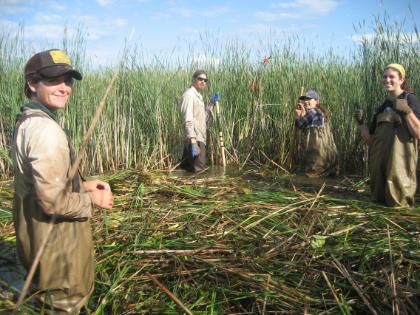IES awarded $500,000 US EPA Great Lakes Restoration Initiative grant

Loyola University Chicago’s Institute of Environmental Sustainability was awarded a $500,000 US EPA Great Lakes Restoration Initiative grant to implement an innovative coastal wetland restoration, invasive plant management, and renewable bio-energy production project: Furthering capacity to maintain high quality coastal wetlands in Northern Michigan.

Project goals include:
- restoring over 300 acres of invaded coastal wetlands
- converting ~800 tons of invasive plant biomass into carbon-neutral energy
- offsetting current and future restoration costs through the sale of biomass pellets
- remotely identifying populations of invasive plants &
- building capacity to sustain long-term invasive plant management in Northern Michigan.
Tuchman and Lishawa will lead this highly collaborative project, which includes partners from Oregon State University (Dennis Albert), DePaul University (Beth Lawrence), Lake Superior State University (Gregory Zimmerman), and the University of Michigan Biological Station (Knute Nadelhoffer).

